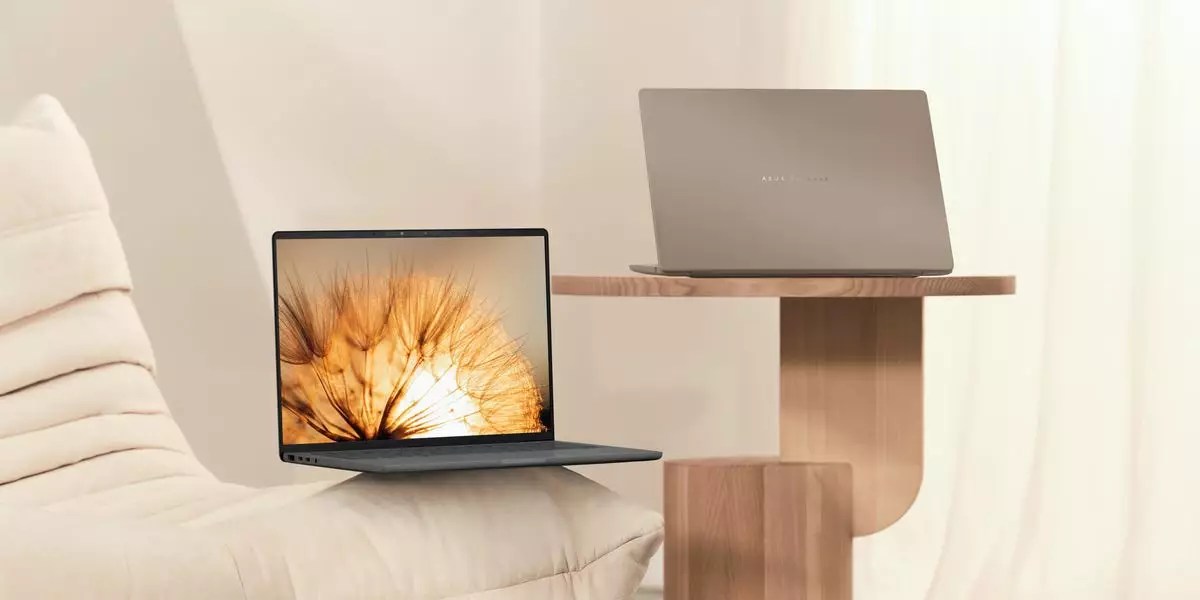In a world where technology is often hidden behind bland designs and utilitarian facades, ASUS Zenbooks stand out as a beacon of innovation and artistry. The recent showcase at Milan Design Week revealed how the fusion of high-tech and high design can enhance our digital experiences, inviting users to not only embrace functionality but also appreciate beauty in technology. The collaboration with Studio INI, led by the distinguished designer Nassia Inglessis, underscored an inspiring vision: technology that is as much about the tactile and visual experience as it is about performance.
Ceraluminum: A Game Changer
At the heart of this transformation is CeraluminumTM, a groundbreaking material that is as striking as it is functional. This proprietary hybrid of ceramic and aluminum represents a significant leap in laptop design—merging the robustness of metal with the elegance and lightweight nature of ceramics. Such innovations highlight a shift towards sustainability, as CeraluminumTM is produced using pure water and electricity, eschewing harmful chemicals and reducing environmental impact. This thoughtful approach not only elevates the user experience through its tactile qualities but also emphasizes that technology can, and should, coexist harmoniously with nature.
An Interactive Experience
The centerpiece of the exhibition, “Willful Wonder,” exemplified this ethos perfectly. As guests traversed the installation, they were greeted not just by art but by an engaging interaction that mirrored the Zenbook experience. The kinetic, biometric sculpture was responsive to visitors, allowing them to become part of the artwork and creating a dialogue between technology and the human spirit. This interplay highlighted the seamless integration of ASUS Zenbooks into daily life; much like the installation, they adapt and respond to users, enhancing creativity and productivity.
The Zenbook A14: A Perfect Companion for Creatives
Among the star attractions, the Zenbook A14 emerged as an embodiment of these ideals—the first laptop featuring an all-Ceraluminum chassis weighing under 2.5 pounds, paired with the dynamic Snapdragon® X Series processor. Such attributes make it not just a marvel of engineering, but an artist’s dream companion. Imagine the ease of hauling a device that is light yet powerful, equipped with a stunning 14-inch OLED display that brings creative projects to life with vivid detail and clarity. The Zenbook A14 is not merely a tool; it’s an enabler of imagination, empowering users to seize fleeting inspiration whenever it arises.
Technology as an Art Form
The crux of the Milan exhibition was to convey that technology transcends mere functionality—it is indeed a canvas for self-expression. Just as artists pour their souls into their work, the design philosophy underpinning the Zenbooks highlights a commitment to marrying aesthetic and utility. The smooth finishes and elegant lines of the Zenbook A14 evoke a sense of sophistication, suggesting that tech can be a medium through which we can express our identities and aspirations. The innovative materials and designs challenge the stereotype of tech being monotonous and uninspired, nudging us towards a future where every device we engage with enriches our lives visually and sensibly.
Embracing a Sustainable Future
ASUS’s endeavor with CeraluminumTM and the Zenbook line provides a much-needed reminder that technological advancements do not have to come at the expense of the environment. The careful consideration of sustainability, paired with cutting-edge innovation, demonstrates that it’s possible to create products that not only perform exceptionally but also promote ecological mindfulness. Every feature, from the lightweight chassis to the responsive AI capabilities, serves as a testament to a vision where technology contributes proactively to our planet rather than detracting from it.
In a landscape saturated with mediocrity, ASUS Zenbooks rise to the occasion, inspiring a new standard in both aesthetics and functionality. They encourage us to dream bigger, design better, and create more mindfully, paving the way for a future where technology is not just a tool, but an extension of our human experience.


Leave a Reply